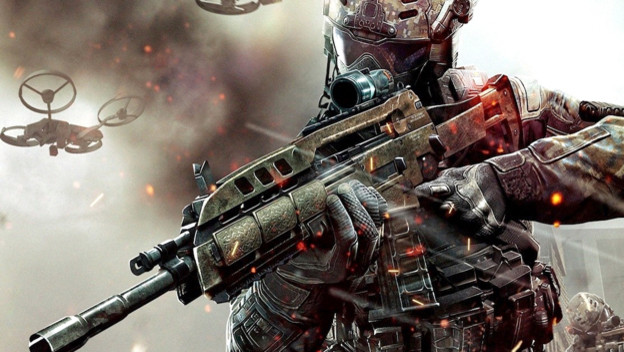Everything id Software said about DOOM at QuakeCon 2015 could understandably be taken as PR speak. The company mentioned health packs as an example of “push-forward gameplay” while avoiding words like “old school” or “retro,” which seems like a distancing tactic a politician might use. I mean, that’s what the cynic in me first assumed; however, as I listened closer to the team’s passionate descriptions of the single-player campaign, details I would later be able to verify by playing the multiplayer, I realized that I was wrong: id Software is genuine about its design philosophy.
I returned home to consider the intricacies of old school first person shooter design while comparing them to modern FPSs. Thinking back on the conference, I’ve determined the big difference (although there are many more) between DOOM and Call of Duty is this: the method for restoring health. In Call of Duty and other modern shooters, you inevitably sustain damage, which is represented by blood on the screen, so you take cover until you shake off the blood. At the time this mechanic began growing in popularity, I had thought it was a welcome change of pace. Firefights seemed more intense – you can’t just run and gun, placing you on ostensibly equal footing with the soldiers fighting alongside you (except for the fact that your superiors seem keen on making you do everything).
Now, when I described regenerative health as a “change of pace” in the last paragraph, I didn’t mean it in the literal sense – at least not when I was first introduced to this mechanic. However, id Software made me realize that the choice between regenerative health and med packs literally makes an impact on the pace of the game. A game that uses regenerative health, such as Call of Duty , will inevitably be a slower-paced game. And it’s not like the multiplayer mode in Call of Duty is drastically different from DOOM . The pace is similarly fast, and performance depends on how much strategy you or your team puts into it; however, the regenerative health ensures that you can’t shoot a bunch of rockets while shrugging off the enemy’s bullets, slowing things down slightly, albeit noticeably so. Unless your enemy kills you with a clean headshot, you have the opportunity to find a wall and hide behind it.
Perhaps this might partially explain why some might feel burned out from modern shooters–apart from the fact that Activision keeps churning out Call of Duty games, inspiring other publishers to follow suit. Now, if you’re among those who feel burned out, there are plenty of games on Steam that emulate the classics. These will not have the backing power of a name like DOOM , one of pioneers of the genre. They’ll satisfy an itch for nostalgia-craving gamers, but they will not usurp the market that the Call of Duty series has. DOOM won’t either, although the franchise will always hold a respected place in gaming’s history. But it will offer something that adheres to old-school design, looks contemporary, and is fast-paced.

It’s not just heath restoration that makes DOOM a callback to older, fast-paced shooters. The controls are fine-tuned and allow for more ridiculous stunts like double jumping. Glory kills require a simple press of a button, and encourage you to move from one enemy to the next by carving and the way the enemies attempt to surround you force you to keep moving—otherwise, you’ll die. The push-forward gameplay mentioned in the conference perfectly describes the fast pace of old school FPS games, but the controls are fine-tuned, and the gameplay is visceral, providing a Quake -like multiplayer experience without feeling outdated.
It just so happens that DOOM allows you to fire rockets from a rocket launcher as if they were rounds from a pistol, and that’s a lot of fun. I don’t expect shooters similar to Call of Duty will adopt this kind of weapon, but hopefully they’ll look to DOOM when deciding the pace they’ll stick to. And maybe consider throwing in a chainsaw.
